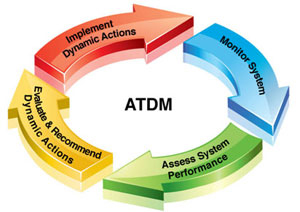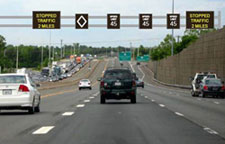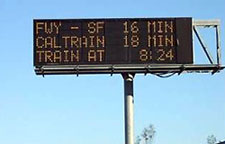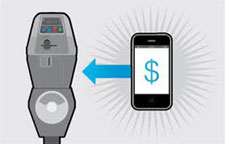Overview
Active Transportation and Demand Management (ATDM) is the dynamic management, control, and influence of travel demand, traffic demand, and traffic flow of transportation facilities. Through the use of available tools and assets, traffic flow is managed and traveler behavior is influenced in real-time to achieve operational objectives, such as preventing or delaying breakdown conditions, improving safety, promoting sustainable travel modes, reducing emissions, or maximizing system efficiency.
Through ATDM, regions attain the capability to monitor, control, and influence travel, traffic, and facility demand of the entire transportation system and over a traveler's entire trip chain. This notion of dynamically managing across the trip chain is the ultimate vision of ATDM.
Moving Towards Active Management
Active management is the fundamental concept of taking a dynamic approach to a performance-based process. Characteristics of an actively managed operations culture include:
- Focus on now rather than the future
- Recognition that conditions vary and may not be “typical”
- Orientation towards customers and their service needs
- Focus on performance outcomes not outputs
- Emphasis on management of system rather than development of system
- Operation runs 24/7, not just 9 to 5
- Scaled to trip – not just a jurisdiction
Transportation agency operations typically take a stair-step approach towards increased active management.
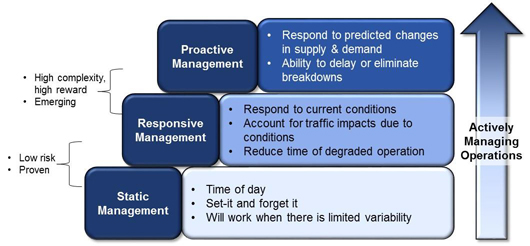
Dynamic Management across the Entire Trip Chain
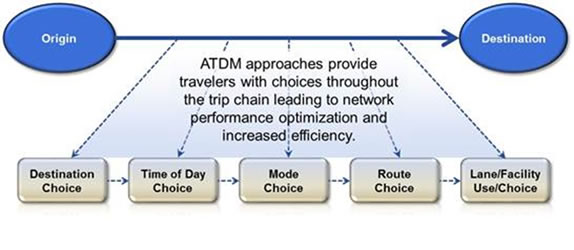
Source – U.S. DOT
- Destination Choice: Decision on whether to make the trip and where to go. Traditionally, this is a long-term choice but day to day or even hour to hour impacts are possible.
- Time of Day Choice: Decision on when trip is to be made. Real-time traveler information for example can affect this choice on a direct hour to hour basis.
- Mode Choice: Decision on how trip is to be made, including decision to drive alone, carpool, use a form of public transport, or some other form of rideshare (e.g., slug lines). Dynamic information such as comparative travel times, real-time arrivals/schedule disruption/event/incident information etc, play a role in choice scenarios.
- Route Choice: Decision on what road or transit route to be taken, based on the most direct, fastest or most cost-effective option.
- Lane/Facility Choice: This decision is influenced by current operational conditions on the travel route, and may involve options related to higher cost / better level of service in comparison with normal costs and normal/substandard level of service, including toll lanes / HOT lanes.
ATDM builds upon existing capabilities, assets, and programs and enables agencies to leverage existing investments — creating a more efficient and effective system and extending the service life of existing capital investments. All agencies and entities operating transportation systems can advance towards a more active management philosophy.
While active management can be applied to any part of our transportation system (such as implementing dynamic pricing on a facility to manage congestion, or informing travelers of specific or compatible transit operations for their trip), it is most beneficial when the relationships and synergies to other parts of the system are considered. For example, an agency could apply adaptive ramp metering to improve freeway traffic flow. However, if the effect of ramp metering on connecting arterials is not considered or if dynamic actions to manage overall demand are not implemented, some of the system-wide performance gains from the ramp metering system may be compromised.
Active management of transportation and demand can include multiple approaches spanning demand management, traffic management, parking management, and efficient utilization of other transportation modes and assets.
Three major categories of ATDM strategies are being targeted as part of the ATDM framework:
| Active Traffic Management | Active Demand Management | Active Parking Management |
|---|---|---|
ATDM ATM Flyer (FHWA-HOP-13-003) |
ATDM ADM Flyer (FHWA-HOP-13-002) |
ATDM APM Flyer (FHWA-HOP-12-033) |

